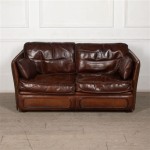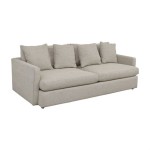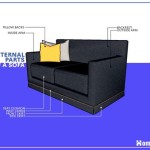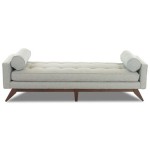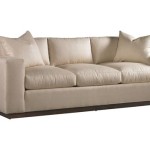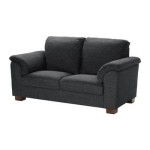Standard Sofa Sizes: A Comprehensive Guide
Selecting the appropriate sofa size is a crucial aspect of interior design. A sofa serves as a focal point in living rooms, dens, and other communal spaces. Its dimensions significantly influence the flow of traffic, available seating capacity, and overall aesthetic appeal. Choosing a sofa that's disproportionate to the room can lead to an awkward or cramped environment. Understanding standard sofa sizes allows homeowners and designers to make informed decisions that balance functionality with visual harmony.
The concept of "standard" sofa sizes is not absolute but rather a range of common dimensions that manufacturers generally adhere to. These dimensions are typically categorized by sofa type, such as loveseats, three-seater sofas, sectional sofas, and sleeper sofas. Each type has its own typical length, depth, and height measurements, influencing its suitability for various room sizes and purposes. Deviations from these standard ranges do occur, particularly with custom-made furniture or designer pieces, but understanding the standard sizes provides a solid foundation for making informed purchasing decisions.
Understanding Standard Sofa Dimensions
Three key dimensions define the size of a sofa: length (or width), depth, and height. Length refers to the overall horizontal measurement of the sofa, typically from arm to arm. Depth measures the distance from the front of the sofa to the back, influencing seating comfort and the amount of floor space the sofa occupies. Height measures the vertical distance from the floor to the highest point of the sofa back, which affects the sofa's visual impact and how it integrates with other furniture pieces in the room.
The seat height and seat depth are also important considerations. Seat height refers to the distance from the floor to the top of the seat cushion, affecting ease of sitting down and standing up. Seat depth measures the distance from the front edge of the seat cushion to the back cushion, influencing the seating position and the overall comfort level. These dimensions can vary significantly between sofa models, and the best choice depends on individual preferences and physical needs.
Arm height and width are additional factors that contribute to the overall size and feel of a sofa. Arm height affects comfort and support when resting arms, while arm width influences the seat's overall footprint. Bulky, oversized arms will reduce the available seating space, while slim arms maximize it. The combination of these dimensions determines the sofa's overall proportions and how it interacts with the space.
Common Sofa Types and Their Standard Sizes
Different types of sofas cater to different needs and spatial constraints. Recognizing these types and their standard sizes enables informed decision-making when selecting the most appropriate sofa for a particular room. Below, we will discuss the standard sizes for the most common sofa types available in the market.
Loveseats: A loveseat is a compact sofa designed to seat two people comfortably. Their length typically ranges from 58 to 72 inches. The depth usually falls between 30 and 40 inches, and the height ranges from 30 to 36 inches. Loveseats are well-suited for smaller living rooms, apartments, or as supplementary seating in larger spaces. Their smaller footprint makes them easier to maneuver and position in tighter areas.
Three-Seater Sofas: The three-seater sofa is a standard choice for many living rooms, offering a balance between seating capacity and space requirements. The typical length of a three-seater sofa ranges from 72 to 96 inches. The depth and height dimensions generally remain consistent with those of loveseats, falling between 30 and 40 inches and 30 and 36 inches, respectively. Three-seater sofas provide ample seating for small families or individuals who frequently entertain guests.
Sectional Sofas: Sectional sofas are versatile pieces that consist of multiple modular sections that can be arranged in various configurations. Their size is highly variable depending on the number of sections and their individual dimensions. A typical three-piece sectional might have a length ranging from 80 to 110 inches, while larger sectionals can extend beyond 120 inches. The depth and height dimensions are generally similar to those of loveseats and three-seater sofas. Sectional sofas are ideal for larger living rooms and offer flexibility in arrangement and maximum seating capacity.
Sleeper Sofas: A sleeper sofa combines the functionality of a sofa with the added benefit of a pull-out bed. Their dimensions tend to be slightly larger than standard sofas to accommodate the internal bed mechanism. A queen-size sleeper sofa typically ranges from 75 to 85 inches in length, while a full-size sleeper sofa falls between 70 and 80 inches. The depth and height dimensions are comparable to those of standard sofas. Sleeper sofas are valuable additions to guest rooms or multi-purpose spaces, providing comfortable seating during the day and a convenient sleeping solution for overnight guests.
Factors Influencing Sofa Size Selection
Several factors should be taken into consideration when determining the appropriate sofa size for a particular space. These factors include room size, traffic flow, existing furniture, and personal preferences. Failing to consider these elements can result in a sofa that is either too large or too small for the room, compromising both functionality and aesthetic appeal.
Room Size: The size of the room is arguably the most critical factor in determining sofa size. A large sofa in a small room will make the space feel cramped and uncomfortable, while a small sofa in a large room may appear insignificant and out of place. Measure the dimensions of the room carefully and create a floor plan to visualize how the sofa will fit within the available space. Leave adequate space for walkways and ensure that other furniture pieces can be comfortably accommodated.
Traffic Flow: Consider the flow of traffic within the room when selecting a sofa size. The sofa should not obstruct pathways or create bottlenecks, making it difficult to move around the space. Ensure that there is sufficient clearance between the sofa and other furniture pieces, such as coffee tables, end tables, and entertainment centers. A well-planned layout will promote a sense of openness and ease of movement.
Existing Furniture: Take into account the size and style of existing furniture pieces when selecting a sofa. The sofa should complement the other furnishings in the room and maintain a sense of visual harmony. Avoid choosing a sofa that is significantly larger or smaller than the existing furniture, as this can create an unbalanced and awkward aesthetic. Maintain consistent scale and proportion throughout the space.
Personal Preferences: Personal preferences also play a significant role in sofa size selection. Consider the number of people who will typically use the sofa and their preferred seating positions. If you frequently entertain guests, a larger sofa or sectional may be necessary to accommodate everyone comfortably. If you prefer to lounge and relax, a deeper sofa with plush cushions may be a suitable choice. Ultimately, the ideal sofa size should align with individual needs and lifestyle.
Beyond these key dimensions and considerations, it's worth examining manufacturer specifications closely. These specifications often include details beyond the standard dimensions, such as arm width, leg height, and back cushion thickness. Taking the time to review these specifications ensures that the chosen sofa will not only fit the space physically but also aesthetically complement the existing décor. Consider fabric type as well, as thicker materials can subtly influence the overall perceived size of the sofa. A patterned fabric may appear to enlarge the sofa, while a solid, dark color may give it a more compact appearance.
Finally, remember the importance of testing out potential sofas in person, if possible. Pictures and dimensions can provide a good starting point, but sitting on the sofa, feeling the material, and assessing the overall comfort level is an essential step in the selection process. This hands-on approach will provide a more accurate understanding of the sofa's true size and suitability for individual needs and preferences.

U Shape Sofa Set Fabric 9 Seater With 4 Puffies Standard Size Gkw Retail

L Shape Sofa Set Fully Customizable Leatherette Standard Size Gkw Retail

Farina Sofa Steel Grey Urban Ladder
Royal Fv 5 Seat Sofa Set 3 1 Fullcover Sofas Furniture For Home

Standard Sofa Dimensions For 2 3 4 And 5 Person Charts Diagrams Engineering Discoveries

L Shape Sofa Set Lounger Leatherette Standard Size White Gkw Retail

L Shape Sofa Set Modern Hardwood Fabric Standard Size Gkw Retail

Standard Sofa Dimensions For 2 3 4 And 5 Person Charts Diagrams Styling

Modern Modular Office Furniture Leisure Commercial Sofa Sectional Set European Style China Made In Com

Sg3691 Sofa Set With Center And Side Tables Furniture Manila

